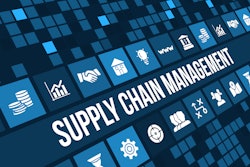
The current economic landscape — headlined by global tariffs and inflation — has retailers on edge. Many CFOs are tightening operations in defense of the unpredictable nature of the retail economy, and they’re seeking to optimize cash flow where they can. One area is by reducing their shrink — and machine learning and predictive AI solutions can play a key role.
Traditional ways of managing shrink rely on manual review processes that can be very time-consuming and leave loss prevention teams more susceptible to overlooking high-risk patterns of loss. In fact, total retail loss research from Appriss Retail finds in some sectors, retail losses can reach up to 80%, driven by operational inefficiencies, inventory errors, and fraud — not just theft.
Implementing a holistic approach to uncover and broaden the reach of where loss is happening focuses on all revenue drains.
Data-driven, AI-powered approach to total retail loss
Machine learning and AI software are becoming essential tools inside a retailer’s supply chain strategy, helping to manage inventory on shelves and optimize delivery routes. However, AI doesn’t just help retailers get products to the store; it also enhances how retailers manage product returns and uncovers losses.
More specifically, when retailers unify machine learning models and predictive AI solutions, they can develop a strategy that provides a 360-degree view of total retail loss inside the organization. By using a more holistic approach to managing retail loss, organizations can tackle more than just fraud and theft, and leverage AI to spot all types of loss that occurs across the supply chain. A few examples include:
· Unreturned or unsellable items from vendors
· Damaged products
· Administrative errors
· Fraud from suppliers abusing markdown prices
Retailers are complex organizations with comprehensive supply chain strategies, leaving executives to be exposed to a wide array of loss. Machine learning and a predictive view of the business can help identify those gaps and bridge loss prevention teams toward total coverage of retail shrink.
Keys to implementing machine learning for a holistic view of shrink
Getting machine learning and AI solutions into the fold of a retailer’s supply chain and loss prevention strategies requires some foundational needs. To succeed, data, systems, and different points of contact all need to work in harmony. Truthfully, retailers will likely need to utilize multiple tactics and partners in order to be more streamlined.
Developing a holistic, 360-degree view of shrink and total retail loss starts with these key elements:
Unified data. An end-to-end system attacking shrink is only as good as the data funneling through it. Sales data, inventory insights, shopper information, and more, need to be unified across both online and brick-and-mortar channels and pulled into one location. From there, ensuring supply chain teams, loss prevention investigators, digital loss prevention teams, and all parts of the business have access to the data in real time supports optimal decision-making.
Machine learning and AI insights. With data in one centralized location, machine learning tools can then assist fraud and reverse logistics teams by analyzing the transaction data, shopper histories, returns data, and more to provide strategic recommendations or alerts about where shrink is occurring or whether a consumer is attempting an incident of returns fraud.
Precision partnerships. When reviewing a retailer’s returns process, specifically, the operation can include multiple partners working in sync. For example, a retailer will need to bring together a Card Not Present (CNP) provider, a returns and claims authorization solution, a returns management solution, and a reverse logistics company to obtain a full view of the consumer’s journey — from purchase to return — while delivering fraud protection along the way. Returns are a major driver of loss: According to transactional data and research from Deloitte and Appriss Retail, return fraud and abuse and claims cost retailers $103 billion in 2024.
Addressing total retail loss is a timely way for retailers to save money and machine learning can be a key tool. Bringing in select partners, unifying data, and establishing a system of real-time visibility will enable retailers to manage returns, uncover loss, and fight fraud.
The future of AI, shrink, returns, and the supply chain
Retail supply chain executives and data officers are already using machine learning to enhance how their companies make decisions. For instance, a Gartner study estimates that by the end of 2025, 95% of data-driven decisions will be executed at least partially by AI. No doubt, optimizing returns and reducing shrink are key data-driven tactics.
Companies that harmonize and strengthen their data throughout the supply chain, implement strategic partnerships, and layer in AI solutions can root out inefficiencies, prevent returns fraud, and optimize cash flow during a time where it’s needed most.




















